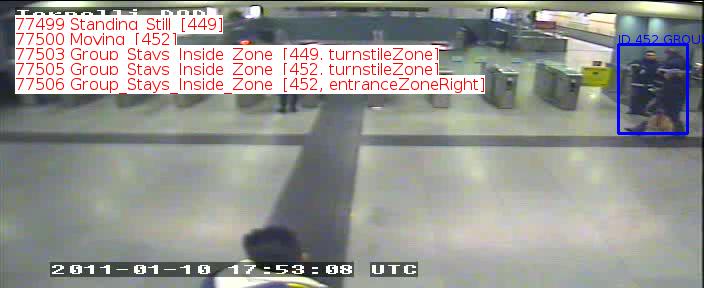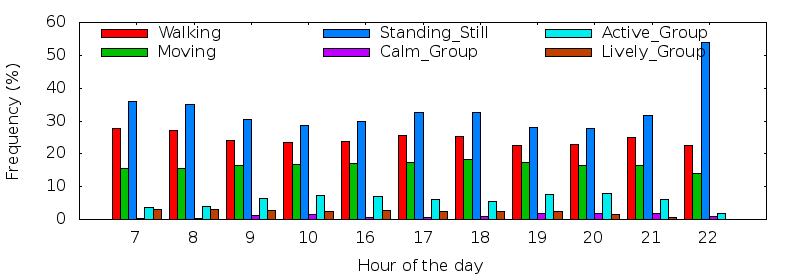Section: New Results
Group Behavior Understanding
Participants : Carolina Gárate, Sofia Zaidenberg, Julien Badie, François Brémond.
The goal is to recognize group behavior from videos. Dangerous and criminal behaviors are mostly observed within groups of people. The idea is to detect potentially dangerous situations while they are happening in the context of underground railway station security.
keywords: group tracking, scene understanding, group behavior recognition, video surveillance, event detection.
This research work considers a process consisting of 5 consecutive steps for video processing. The steps are: 1) segmentation, 2) blob detection, 3) physical objects tracking, 4) group tracking and 5) behavior recognition. Here, we are focussing on the last two phases: group tracking and behavior recognition.
The group tracking approach characterizes a group through three features: the average of the intra-object distance, the average standard deviations of speed and direction. The input for this algorithm is a set of trajectories for the physical objects (output of the stage 3: physical objects tracking) tracked by the algorithm described in [64] . The trajectories are processed using Mean-Shift clustering to create more reliable groups, see Figure 33 .
The behavior recognition approach identifies 2 steps: knowledge modeling and the event recognition algorithm. The ontology is implemented with the ScReK declarative language [94] . The grammar describes the objects and events using the extended BNF (Backus Naur Form) representation.
We process large amounts of long video surveillance data from Paris and Turin underground railway station to perform statistical analysis. This analysis automatically brings forward data about the usage of the station and the various behaviors of groups for different hours of the day. We present the results and interpretation of one month of processed data from a video surveillance camera in Turin subway.
|
One of the measures obtained in the experimentation is the agitation level which is represented by the variation of the size of the bounding box of a group. We consider 3 categories from no agitation (“Calm_Group", having a bounding box with stable size) to little agitation (“Active_Group") to high agitation (“Lively_Group", the bounding box's size varies a lot, meaning that group members move around more often). Figure 34 shows that most of the time, this middle category predominates. Groups are neither too calm, nor too agitated. Moreover, it is more common for a group to be lively rather than calm. The rest of the results obtained were presented in [54] .



